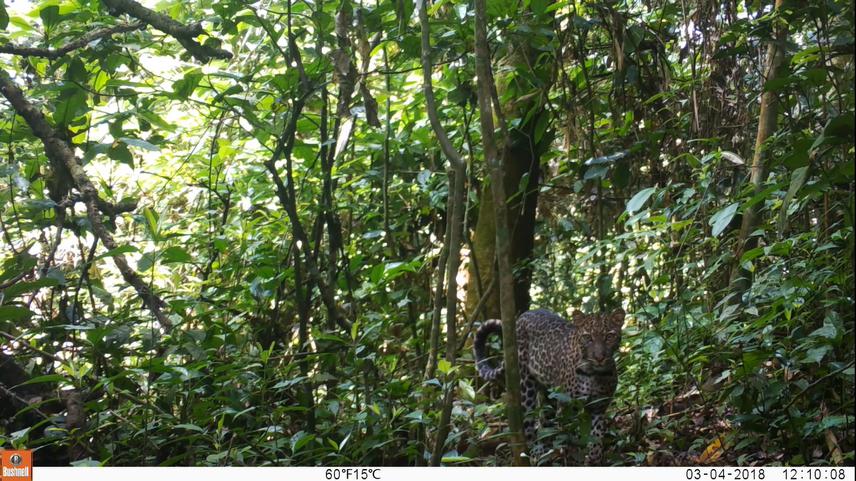Janika Wendefeuer
This master thesis aims to assess large mammal population density, distribution and abundance as well as major threats to wildlife population in two zones (National Park and Community Hunting Area) in the Dzanga Sangha Protected Areas using a recently developed camera trapping technique. The results will advise the Park management on the effectiveness of existing management schemes and serve as a feasibility study for the implementation of a continuous camera monitoring system in the DSPA. Additionally, the data will contribute to the A.P.E.S. database and the advancement of camera trapping technique in tropical forest ecosystem.

Rapidly growing demand for natural resources in Central Africa has exacerbated the threats to wildlife such as poaching, logging, mining and agricultural extension. The Central African forest is inhabited by numerous species listed on the IUCN Red List including Western Lowland Gorilla, Chimpanzee, Forest Elephant and many more. But many animal populations are declining. To protect the exceptional biodiversity in the region, conservation management must consider the relevant threats and evaluate the conservational state of ecosystems and animal populations at risk on a regular basis.
Biomonitoring is an essential method for this purpose. Camera trapping can be used in biomonitoring to assess density, abundance and distribution for a large spectrum of mammals and other terrestrial species. Furthermore, the data can be directly linked to threats for the fauna in the ecosystem. Although camera trapping is already frequently used to determine the presence and distribution of a large spectrum of terrestrial animals, methods and theoretical approaches on how to estimate population densities are still developing.
In this study the region of investigation is the Dzanga Sangha Protected Areas (DSPA) in the Central African Republic. Due to the high biodiversity in the region, they are part of the UNESCO World Heritage Site Sangha River Trinational Protected Areas. DSPA is a multi-used zone comprising of a special reserve, a national park and a community hunting zone where indigenous people, the Ba’Aka, can hunt with traditional techniques. In 2016 a logging company started its business in the north of DSPA.
The study will sample in total 36 transects of each 2 km length covering two zones of DSPA (National Park & Community Hunting Area). Along each transect two cameras will be installed for approximately 165 days. To estimate the densities of animals with camera trapping, a new developed approach derived from point transect sampling will be used (*Howe et al., 2017).
The key goal of this study will be:
1) to assess large mammal population density and abundance using a recently developed camera trapping technique,
2) to compare different zones across the reserve to identify major threats to wildlife and effectiveness of differing management schemes,
3) to evaluate the adequacy of the method by comparing it to previous assessments.
The results will advise the Park Management on the effectiveness of existing management schemes and serve as a feasibility study for the implementation of a continuous camera monitoring system in the DSPA.
*Howe, E. J., Buckland, S. T., Després‐Einspenner, M. L., & Kühl, H. S. (2017). Distance sampling with camera traps. Methods in Ecology and Evolution.